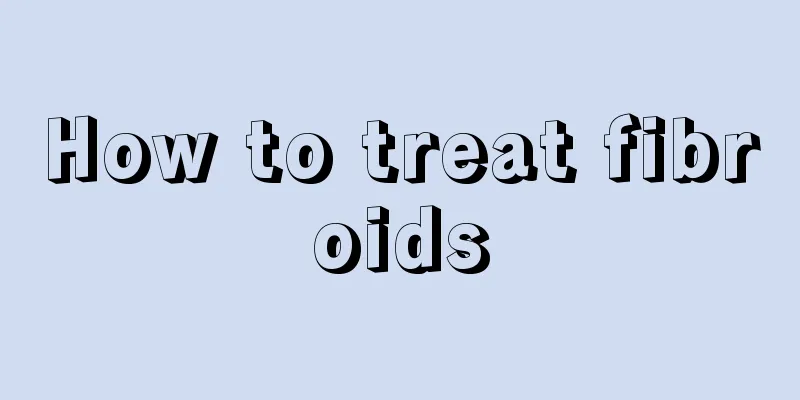How to treat fibroids

|
How to treat fibroids? In life, everyone hates diseases and hopes that diseases will stay away from their bodies forever. However, if you accidentally get fibroids, you definitely hope to recover quickly. So today we will learn about how to treat fibroids: Fibroid Treatment 1. Principles of fibroid treatment Fibroids should be removed surgically at an early stage, and the surrounding tissues should be removed appropriately. Desmoid tumors should be removed extensively at an early stage. The tumors should be sent for pathological examination after surgery to exclude malignancy, and medication is generally not required. Fibromas are composed of well-differentiated subcutaneous connective tissue. They are common in adults aged 40 to 50. The tumor grows slowly and generally stops growing after it develops to a certain size. They are benign tumors and rarely become malignant. Surgical resection is the main treatment. During the treatment process, the patient's psychology should be correctly guided so that the patient has a clear understanding of the disease and avoids the patient falling into various negative emotions and psychology. At the same time, the patient should be encouraged to participate in more beneficial sports, especially various outdoor sports. Such as: mountain climbing, fishing, etc. Second, the key points of fibroid surgery The main treatment is wide surgical resection. Radiotherapy and hormone application can inhibit tumor growth in individual cases, but it is generally considered not to be the main treatment method, but can be used as palliative treatment for those who cannot undergo surgery. Although this disease has malignant biological behavior with multiple recurrences, extensive and thorough surgical resection can prevent recurrence. 1. Intraoperative Frozen Section Examination Although most patients are diagnosed with this disease before surgery, it is mainly confirmed based on frozen sections during surgery. 2. Extensive resection is required The resection range must have a certain width and depth. It should include 3 to 5 cm of normal skin, muscles, tendons and other tissues around the tumor and certain normal tissues deep inside. If the tumor invades the periosteum or peritoneum, it should be removed together. If the tumor surrounds important blood vessels and nerves, it should be sharply separated and blood vessel transplantation can be performed if necessary. Severe cases should be controlled for indications of amputation and hemipelvic amputation. |
<<: How to treat fibroids quickly
>>: What is the most commonly used drug for treating fibroids?
Recommend
How does TCM treat lung cancer? Introduction to TCM dialectical treatment for lung cancer
Traditional Chinese medicine plays an incomparabl...
How to prevent gallbladder cancer
Gallbladder cancer is a bile disease. Many people...
What are the effects of titanium
Titanium is a kind of metal. In China, the output...
What are the causes of sudden hematuria
Hematuria is not a single disease, it is a sympto...
Does aloe vera have body odor?
Aloe vera is a plant that has many benefits for t...
What to do if your legs hurt when using air conditioning in summer
People cannot live without air conditioning in th...
What color is copper sulfate solution
When copper sulfate is dissolved in water, it wil...
Drink more water after doing these things
As we all know, life cannot live without water. E...
How to care after colon cancer surgery
How to care after colon cancer surgery? After col...
Six major hazards of bad breath!
Is bad breath just a problem of breath? Is bad br...
Training methods and techniques for chest resonance
Many people may not understand the concept of &qu...
What to do if leather clothes are moldy
Leather jackets are very common clothing. Such cl...
What is the difference between Huadiao wine and Nv'erhong
Everyone is familiar with Nv'erhong. Huadiao ...
How does broccoli enlarge breasts? 3 recipes to help you
Every female friend wants to have a pair of firm ...
Is teeth cleaning good? What is teeth cleaning all about?
Teeth cleaning is a popular dental procedure in r...









